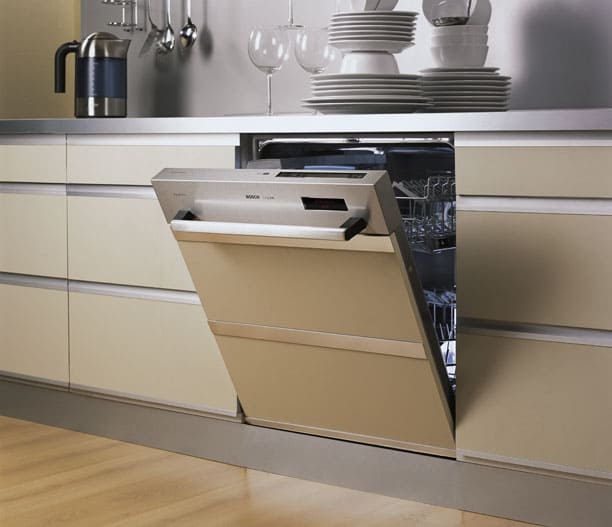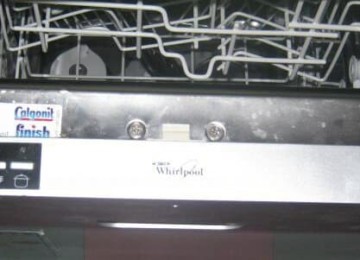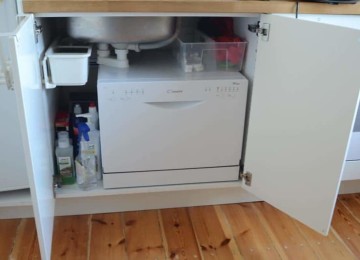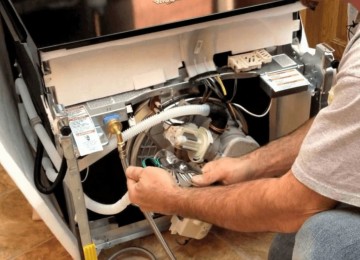Washing dishes takes a huge amount of time; purchasing a dishwasher will relieve several free hours. And built-in models are among the most convenient, because they can even be installed in an existing headset. However, inexperienced users may be confused about how to integrate a dishwasher into a finished kitchen. Fortunately, expert advice will dispel all doubts and reveal some subtleties known only to professionals.
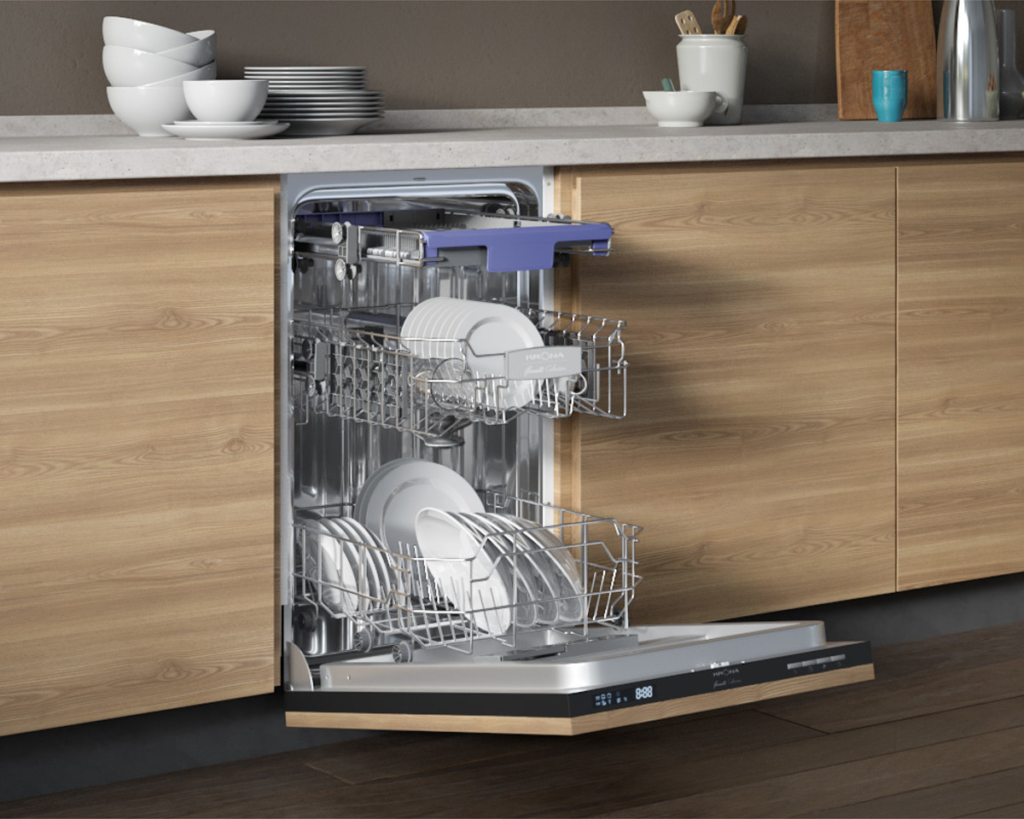
Types of Dishwashers
All models of dishwashers are divided into two main types: household and industrial. Models of the second type are installed in public catering areas, so there is no need to disassemble them. But household dishwashers are divided into:
- Full size. They are considered the most popular type; buyers choose the model because of the convenient location of the display responsible for control. A big plus is its versatility, which allows you to wash any type of dishes.Capacity also plays an important role, since many devices can wash up to 17 sets. Devices of this type can be either built-in or free-standing. They usually reach a height of up to 85 cm, and the depth can reach 65 cm.
- Narrow. Well suited for a small family or medium sized kitchen. Usually they allow you to clean no more than 10 sets. The width of devices of this type can reach 50 cm. Buyers are attracted by the ease of operation and cheaper cost.
- Compact. The smallest equipment, similar in size to microwave ovens. Typically, devices of this type have a width of no more than 45 cm. Their modest dimensions allow them to be successfully placed in sets of any type. Buyers often choose such models because of the ability to install directly on the countertop. Capable of cleaning up to 6 sets of food debris.
- Freestanding. Devices of this type are located independently of the kitchen unit. The machine has its own body that does not require installation.
- Fully built-in. Manufacturers often equip models with a special indicator beam. After the washing process is completed, a light marker appears on the floor. When installed, the machine body is completely hidden behind the facade. And the display through which control is carried out is located at the end of the front wall.
- Partially built-in. This type of dishwasher has an open front wall. In some cases, it is only partially hidden under the facade. The display through which the operation of the product is controlled is available when the device is turned on. Often it is located immediately above the facade.
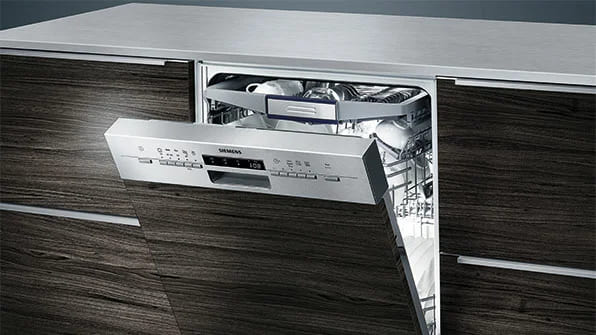
Dimensions for built-in dishwasher
You can determine the appropriate sizes through the website of the selected manufacturer or an online store of household appliances. The model must correspond to the measurements of the niche or selected section if you want to hide the device completely. Sometimes, instead of a door, a special damper is used, designed in the same style as the kitchen unit.
The depth of a standard niche is approximately 0.55 m. For typical kitchen sets, narrow models with a width of about 0.45 m are produced. The height usually ranges from 0.815 to 0.875 m, which fits the size of most countertops. In this case, there is enough space left to ensure cooling and supply lines.
If you need to place the machine in the upper sections, then you should pay attention to compact models.
Despite the narrowness of the compartment and its shallower depth, placing a mini-dishwasher in it will not be difficult. Moreover, installation will be even easier than with larger products. It will be easy to provide a connection to the sewer, even if the device is located far from the siphon.
You only need to hide the drain pipe and install it to the electrical network and water supply. Despite their lower power and modest volumes, compact models have significant advantages. Firstly, they are more economical, as they consume much less water and energy. Secondly, their modest size allows them to be placed in ready-made kitchens. Their installation does not require remodeling or ordering additional cabinets.
Furniture manufacturers often make cabinets slightly wider than the stated dimensions. This allows you to integrate the equipment without much difficulty. And brands that make dishwashers make models slightly smaller in size than indicated.This measure allows for the installation of equipment, even in the presence of uneven surfaces.
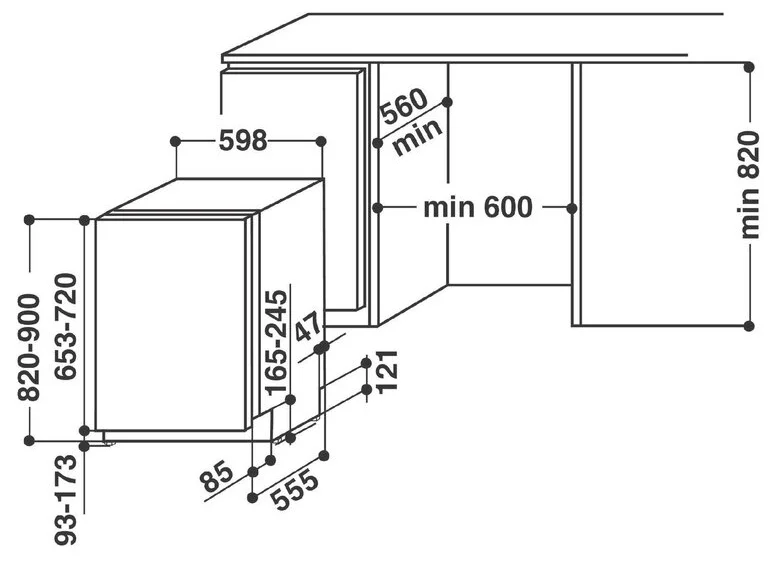
Options for installing a dishwasher
The built-in section can be different: from a niche prepared by the manufacturer to a module located separately from the kitchen unit. Any option will be acceptable if it allows the device to fit into the overall style of the room. The main embedding methods include:
- Using a ready-made cabinet. If there is a cabinet near the sewer drain and water supply, then it can be used to build in equipment. However, it is important to measure its dimensions; most dishwasher models can be installed in compartments more than 45 cm in width. The close location to communications will make connecting the machine to the water supply and drainage system much easier.
Installation includes the following steps:
- dismantling the rear wall of the section and removing the shelves, removing the guides;
- leveling the machine by changing the length of the legs;
- connection to the cold water supply, and then to the drain point (sometimes a water seal is also installed);
- wiring a separate electrical line and installing an outlet for a dishwasher;
- mounting the panel to the device door to maintain the decorative component.
- Order a separate section for the dishwasher. The method is suitable if all the cabinets and compartments of the kitchen unit are occupied, and the room is of impressive size. Then it is best to place an order from a company that manufactured furniture, a cabinet that matches the style and color. It is better to install the device close to the electrical cable and water supply.
Installation proceeds as follows:
- arrangement of equipment in a prepared module, fixing the position of the device to eliminate jumps during operation;
- hoses are laid along the wall, which makes maintenance easier.
- Using a niche. If the kitchen set has a recess for a microwave, oven or other appliance, then it can be used to install a dishwasher. Typically, connections will require much longer than standard hoses. To hide the dishwasher, special decorative panels are used. They reliably hide the front part of the equipment, disguising it as part of the overall kitchen design.
Choosing a location based on size
If the kitchen set has been installed for a long time, then when buying a dishwasher you need to rely on the dimensions of its cabinets. If there is no separate niche designed specifically for the device, you will have to sacrifice one of the sections. It is advisable to choose a compartment located closer to the sink and outlet.
Before purchasing the selected model, you need to measure the selected drawer and then compare it with the parameters of the dishwasher. They are usually freely available online. All you need to do is go to the manufacturer’s website or the online version of the store where you purchased the device. It is important to make sure that the dimensions of the model fit the parameters of the kitchen.
If the kitchen set was made to order, problems may arise with the selection of equipment. The dishwasher may simply not fit into the cabinet in size, since manufacturers supply the market with models for standard kitchens. And sections, a custom-made headset, can be higher, narrower or deeper in parameters.In this situation, a good solution may be to purchase a compact size model or remodel.
Required tools and materials
During the installation of the dishwasher the following will be used:
- scotch;
- screwdriver;
- 16A automatic;
- copper cable with a cross-section of at least 2-2.5 mm;
- adjustable wrench;
- shut-off ball valve;
- screwdrivers: Phillips and flat;
- pliers;
- sealing tape;
- hammer;
- tee;
- chisel;
- European standard sockets;
- siphon having two fittings;
- filter.

Installing a built-in dishwasher model
Most of the connection work can be done yourself. However, some are better left to specialists who have the skills and permission to work. For example, it is better to order cable routing and installation of sockets from the management company.
Checking the contents
The purchased model must be cleaned of packaging elements.
Then you need to find the manual and check that all the parts included are included. The user manual must be translated into Russian. If the manual could not be found or was lost, then the step-by-step installation process is usually described by manufacturers on their websites.
Usually the following parts are included with the dishwasher:
- fasteners;
- hoses for water supply and drainage;
- a template that allows you to install the façade;
- gaskets;
- steam protection film;
- rubber apron.
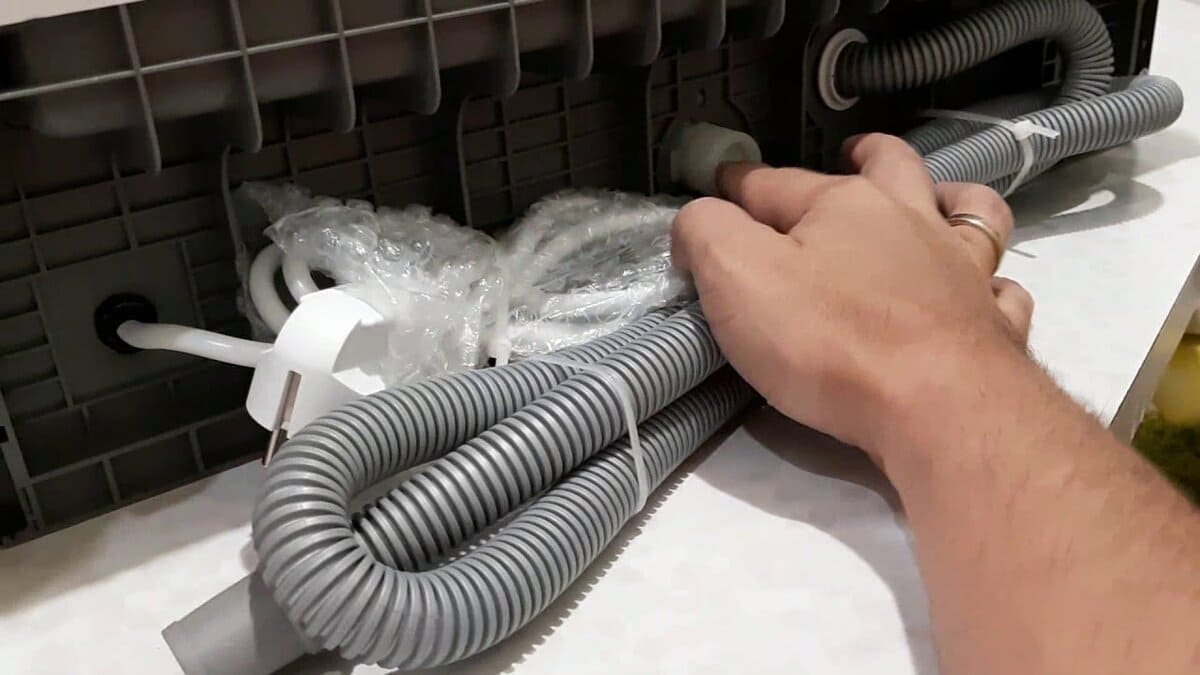
Electrical connection
The dishwasher must be connected to the nearest power point, since the power filter cannot be pulled through. The extension cords simply will not withstand the load and will melt. Public sockets containing many devices are even more prohibited.The ideal option would be to create a separate electrical outlet for the dishwasher. It is best to use grounded sockets with a separate packet switch, which will insure against network overload and short circuits.
The electrical outlet should be installed at a close distance from the future location of the dishwasher. The length of the standard cord is about 1.5 m, so the socket should not be further than its length allows. You cannot install the electrical outlet close to the floor, if a flood occurs, then a short circuit cannot be avoided. The optimal distance from the floor to the installation site starts from 25 cm.
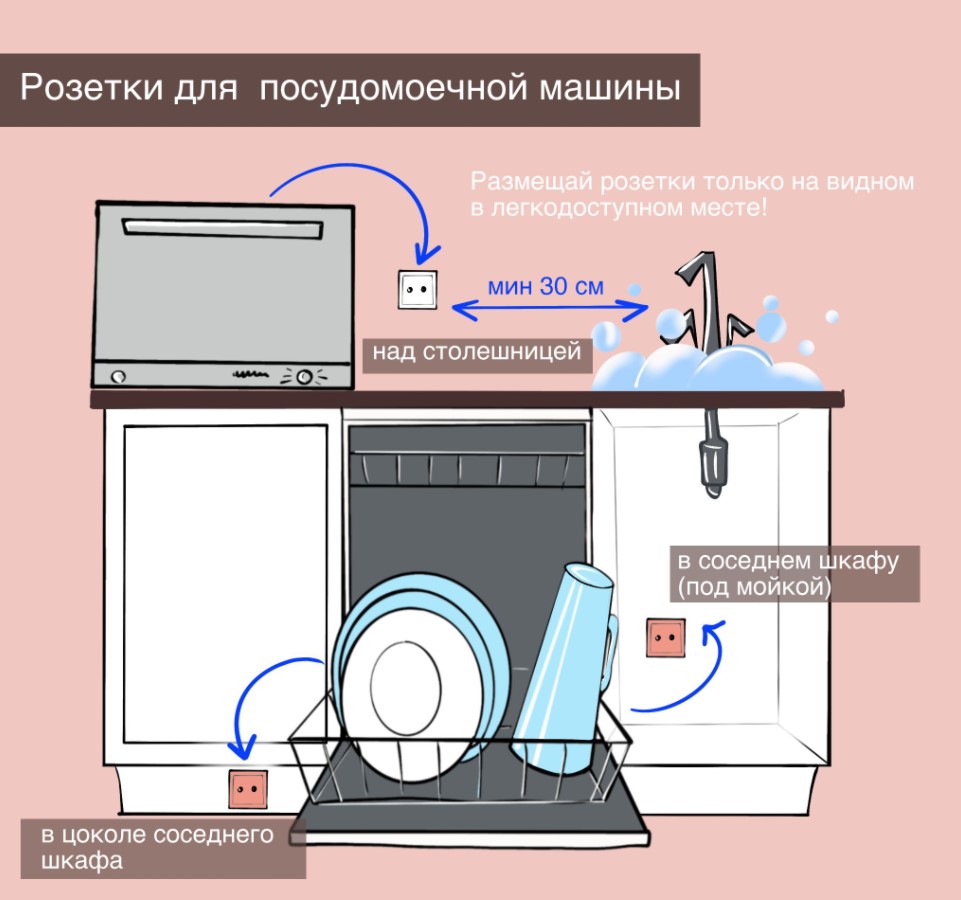
Water supply
Although most brands provide their products with the ability to connect to hot water, it is not recommended to use it. Experts note the poor quality of water, which can worsen health. In addition, the dishwasher can simply break down, since the water supply temperature can change unpredictably. Many manufacturers note a certain value, which is the maximum permissible. And since it will not be possible to control its change, breakdowns will only be a matter of time.
The algorithm is as follows:
- On the riser, it is necessary to shut off the water before carrying out any work.
- Having unscrewed the mixer hose, it is necessary to mount the tee.
- It is necessary to install the mixer to one of the inputs of the branch pipe.
- We install the cleaning filter to the other input, then install the shut-off ball valve.
- Now the hose coming from the machine is connected to the tap.
- All joints must be protected with tape, which will prevent liquid from leaking.
Connection to the sewer
In order for the dishwasher to drain the collected water, it must be connected to the sewer system.
This can be done in several ways:
- Installation to the sewer pipe outlet collar. The easiest way to ensure that used water is drained. The hose from the machine is directly mounted to the cuff. Everything is fixed with a special tape that ensures sealing. This connection method can be used if there is a free hole located under the sink.
- To the sink drain system. If it is not possible to fix the hose directly to the sewer pipe, you will have to install it to the sink drain system. This is a more labor-intensive and expensive option, since you will have to change the siphon.
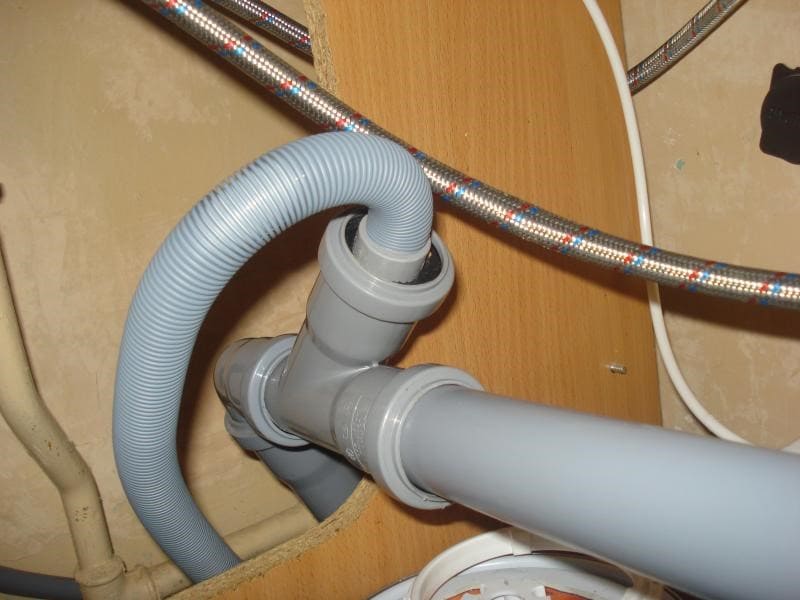
Installation in a prepared place
Before starting installation work, you must make sure that the selected location can accommodate the dishwasher. There should be areas for hoses at the back of the section or on the sides. The installation algorithm is as follows:
- install the device opposite the prepared compartment or niche;
- The hoses installed in the machine must be pulled through the holes to the place of water supply and sewerage;
- The power cord must be pulled to the outlet;
- insert the machine into the prepared area, you must make sure that the cord and hoses are long enough;
- install the machine according to the user instructions (consistently fasten the parts supplied with the kit: stick on a vapor barrier film, fix the sealing tape around the edges, install damping elements);
- adjust the height of the machine legs if the body is uneven;
- if the manufacturer has provided noise protection, then it must be fixed to the bottom of the product;
- the last stage includes hiding the dishwasher door, which is covered with a special decorative trim or drawer front;
- The front parts are adjusted in terms of dimensions and fixed with self-tapping screws.
Expert advice on installing your dishwasher
Experts have prepared several recommendations that will make installation easier:
- for installation, you need to select a niche of a suitable size, otherwise vibrations and shaking may occur;
- during installation work, you should rely on the instructions supplied by the manufacturer;
- It is better to entrust electrical work to professionals who have a permit;
- it is necessary to ensure a distance between the back wall of the section and the dishwasher (at least 5 cm) to avoid overheating;
- Do not perform grounding work near gas or water pipes;
- Do not use extension cords to connect the machine to the electrical network, they may catch fire;
- if the drain hose is led into the sink, it must be secured;
- Before any work aimed at troubleshooting, it is necessary to drain the water from the machine and disconnect it from the power supply.
Manufacturers provide various types of dishwashers that will suit any type of kitchen. Even having a ready-made headset will not be a serious obstacle, since there are options for narrow and compact models. They can be installed in the most inconspicuous corners of the kitchen: from small upper modules to a modest place under the sink. Moreover, almost all manipulations can be easily carried out on your own. Only work with electricity should be left to professionals.


